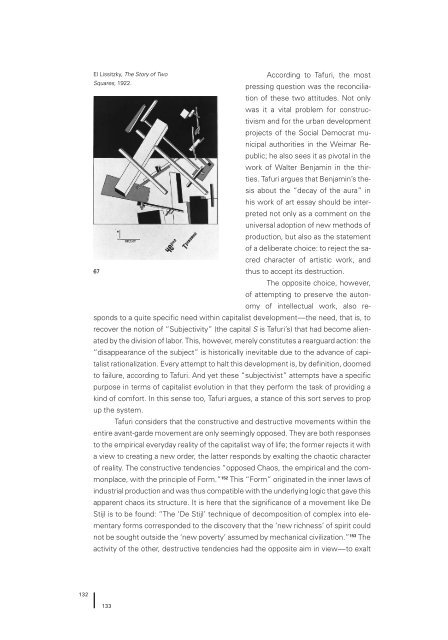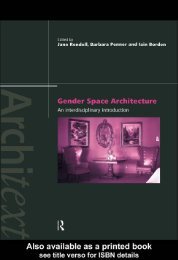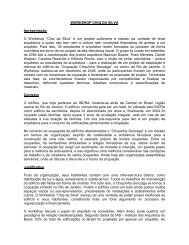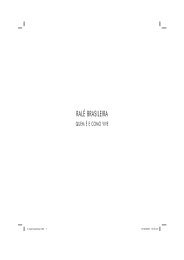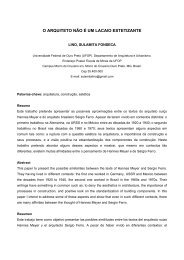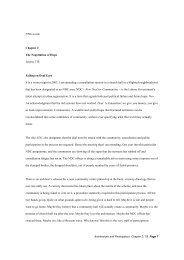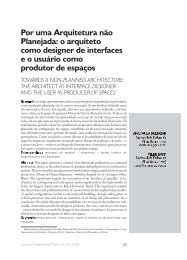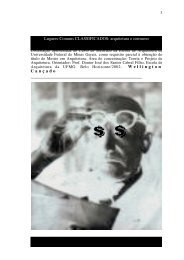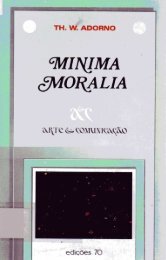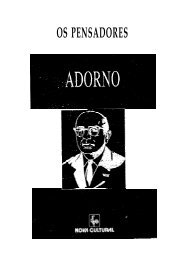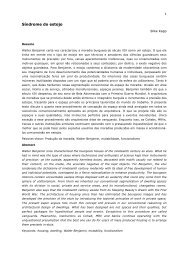Architecture and Modernity : A Critique
Architecture and Modernity : A Critique
Architecture and Modernity : A Critique
Create successful ePaper yourself
Turn your PDF publications into a flip-book with our unique Google optimized e-Paper software.
132<br />
According to Tafuri, the most<br />
pressing question was the reconciliation<br />
of these two attitudes. Not only<br />
was it a vital problem for constructivism<br />
<strong>and</strong> for the urban development<br />
projects of the Social Democrat municipal<br />
authorities in the Weimar Republic;<br />
he also sees it as pivotal in the<br />
work of Walter Benjamin in the thirties.<br />
Tafuri argues that Benjamin’s thesis<br />
about the “decay of the aura” in<br />
his work of art essay should be interpreted<br />
not only as a comment on the<br />
universal adoption of new methods of<br />
production, but also as the statement<br />
of a deliberate choice: to reject the sacred<br />
character of artistic work, <strong>and</strong><br />
thus to accept its destruction.<br />
The opposite choice, however,<br />
of attempting to preserve the autonomy<br />
of intellectual work, also responds<br />
to a quite specific need within capitalist development—the need, that is, to<br />
recover the notion of “Subjectivity” (the capital S is Tafuri’s) that had become alienated<br />
by the division of labor. This, however, merely constitutes a rearguard action: the<br />
“disappearance of the subject” is historically inevitable due to the advance of capitalist<br />
rationalization. Every attempt to halt this development is, by definition, doomed<br />
to failure, according to Tafuri. And yet these “subjectivist” attempts have a specific<br />
purpose in terms of capitalist evolution in that they perform the task of providing a<br />
kind of comfort. In this sense too, Tafuri argues, a stance of this sort serves to prop<br />
up the system.<br />
Tafuri considers that the constructive <strong>and</strong> destructive movements within the<br />
entire avant-garde movement are only seemingly opposed. They are both responses<br />
to the empirical everyday reality of the capitalist way of life; the former rejects it with<br />
a view to creating a new order, the latter responds by exalting the chaotic character<br />
of reality. The constructive tendencies “opposed Chaos, the empirical <strong>and</strong> the commonplace,<br />
with the principle of Form.” 152 This “Form” originated in the inner laws of<br />
industrial production <strong>and</strong> was thus compatible with the underlying logic that gave this<br />
apparent chaos its structure. It is here that the significance of a movement like De<br />
Stijl is to be found: “The ‘De Stijl’ technique of decomposition of complex into elementary<br />
forms corresponded to the discovery that the ‘new richness’ of spirit could<br />
not be sought outside the ‘new poverty’ assumed by mechanical civilization.” 153 El Lissitzky, The Story of Two<br />
Squares, 1922.<br />
67<br />
The<br />
activity of the other, destructive tendencies had the opposite aim in view—to exalt<br />
133


